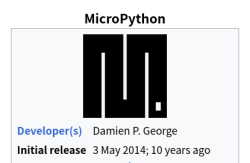Got a Flipper Zero? Ever wanted to use a high-level but powerful scripting language on it? Thanks to [Oliver] we now have a MicroPython application for the Flipper, complete with a library for hardware and software feature support. Load it up, start it up, connect over USB, and you’ve got the ever-so-convenient REPL at your disposal. Or, upload a Python script to your Flipper and run them directly from Flipper’s UI at your convenience!
In the API docs, we’re seeing support for every single primitive you could want – GPIO (including the headers at the top, of course), a healthy library for LCD and LCD backlight control, button handling, SD card support, speaker library for producing tones, ADC and PWM, vibromotor, logging, and even infrared transmit/receive support. Hopefully, we get support for Flipper’s wireless capabilities at some point, too!
Check out the code examples, get the latest release from the Flipper app portal or GitHub, load it up, and play! Mp-flipper has existed for the better half of a year now, so it’s a pretty mature application, and it adds quite a bit to Flipper’s use cases in our world of hardware hacking. Want to develop an app for the Flipper in Python or otherwise? Check out this small-screen UI design toolkit or this editor we’ve featured recently!


















